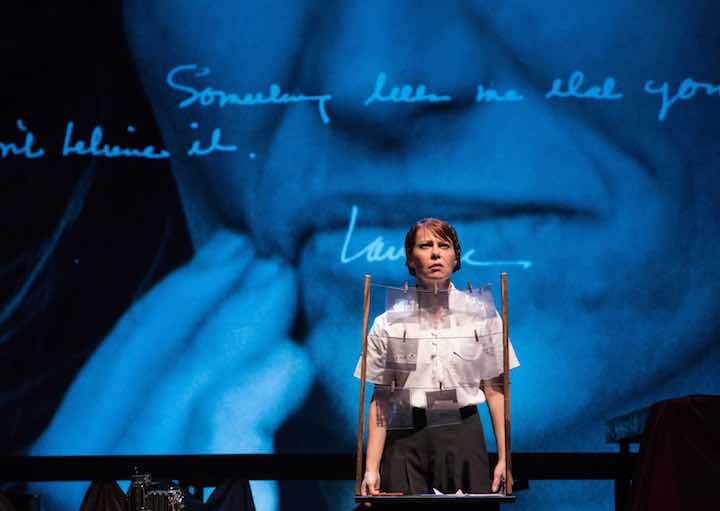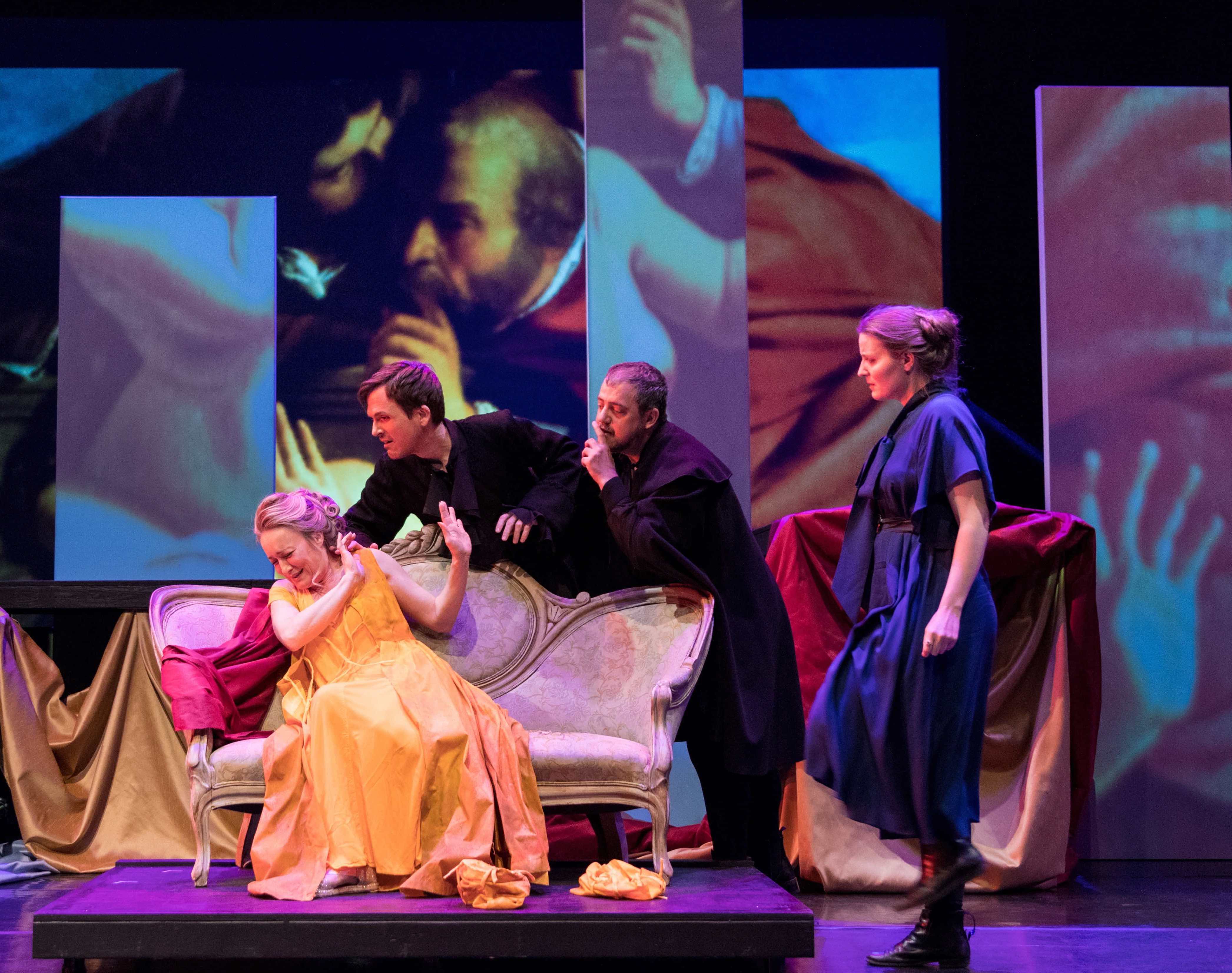Left Coast Chamber Ensemble’s Dorothea and Artemisia, featured world premieres of two chamber operas, and although the operas were billed as being each about an extraordinary woman artist, the reach of both operas was far larger, touching upon the structure of our lives as we live them today.
From the Field, by composer Christopher Stark with libretto by Megan Stark, is listed in the program as a micro-opera of only 25 minutes. Using the work of Depression-era photographer Dorothea Lange, the opera presents not only Lange’s dilemma as a photographer hired by the government to convey a message of progress in the desolate regions of Middle America, but also insights into power and government that are stunningly similar to those we face today in the struggle to deal with climate change and the incipient destruction of the planet.

The opera is divided into three parts. Statements from John Wesley Powell on the impossibility of developing the country’s arid region into farmland that clash with corporate interests’ claim that “rain follows the plow”. Dorothea Lange’s struggle to align her work with the demands of the Farm Security Administration to document a progress that did not exist. And documentary footage of the Nobel Laureate Steve Running on the futility of having his work on climate change believed.
Remarkably, the music interweaves seamlessly with the spoken parts of the opera, and has moments of true poignancy, such as the opening of the opera when the violinist Anna Pressler plays a lullaby alone on the stage, beneath the stage-sized projection of stark tents and even starker figures grouped around an American flag. Soprano Nikki Einfeld’s portrayal of Lange was wonderfully realized, restrained and meditative. The instrumentation was equally restrained, with only violinist Pressler and cellist Leighton Fong.
Of special note and grace were the projections by Andrew Lucia, which combined Lange’s tender photographs, often as negatives, with Powell and the government’s typed statements and Lange’s handwritten letters about the aloneness she feels in creating her art and how it reflects people’s lives. Everything was in black-and-white and grays.
The second chamber opera, weighing in at a comparably hefty 75 minutes, was Artemisia, with music by Laura Schwendinger and libretto by Ginger Strand. The Artemisia of the title is the Italian painter Artemisia Gentileschi (1593–c. 1656). The program notes call the work “speculative non-fiction” – some of the story is based on court documentation and letters and some on the artistic team’s imagination.
This opera focused on three central events within Gentileschi’s life. Her rape, which was well documented by the Italian court, a court that tortured her to validate the honesty of her claim. The paintings she did for her mentor Don Antonio Ruffo. And her failing eyesight in her later years. A fascinating connection put forth by Schwendinger and Strand was that her painting, which used Biblical and mythological imagery, served to embody her personal struggles as a woman. Schwendinger states, “These depictions were often autobiographical, as she relived the traumatic events of her life through her art.”
Mezzo-soprano Betany Coffland sang the title role, and soprano Marnie Breckenridge enacted a second Artemisia in the person of Susanna, one of Gentileschi’s frequently painted subjects. Kyle Stegall, Jonathan Smucker, Igor Vieira and Nikki Einfeld sang supporting roles. The seven-piece chamber ensemble was comprised of Left Coast musicians and guest artists, notably harpist Constance Koo. Matilda Hofman conducted. And everyone was on point in this rather challenging but evocative score.

Projections were again by Andrew Lucia. And while the images of Gentileschi’s paintings were skillfully manipulated into beautiful abstractions, clearer moments of the individual works in their entirety would have been of some importance.
The one off note in both operas was the needless repetition in the use of the libretto. The repetition added an obsessional quality that worked against the originality of the artists portrayed.
Even so, these were lovely contributions to a genre I adore and feel there should be more of: the contemporary chamber opera. Bravo Left Coast Chamber Ensemble for presenting them. And, Bravi tutti for elegant performances.
– Jaime Robles
